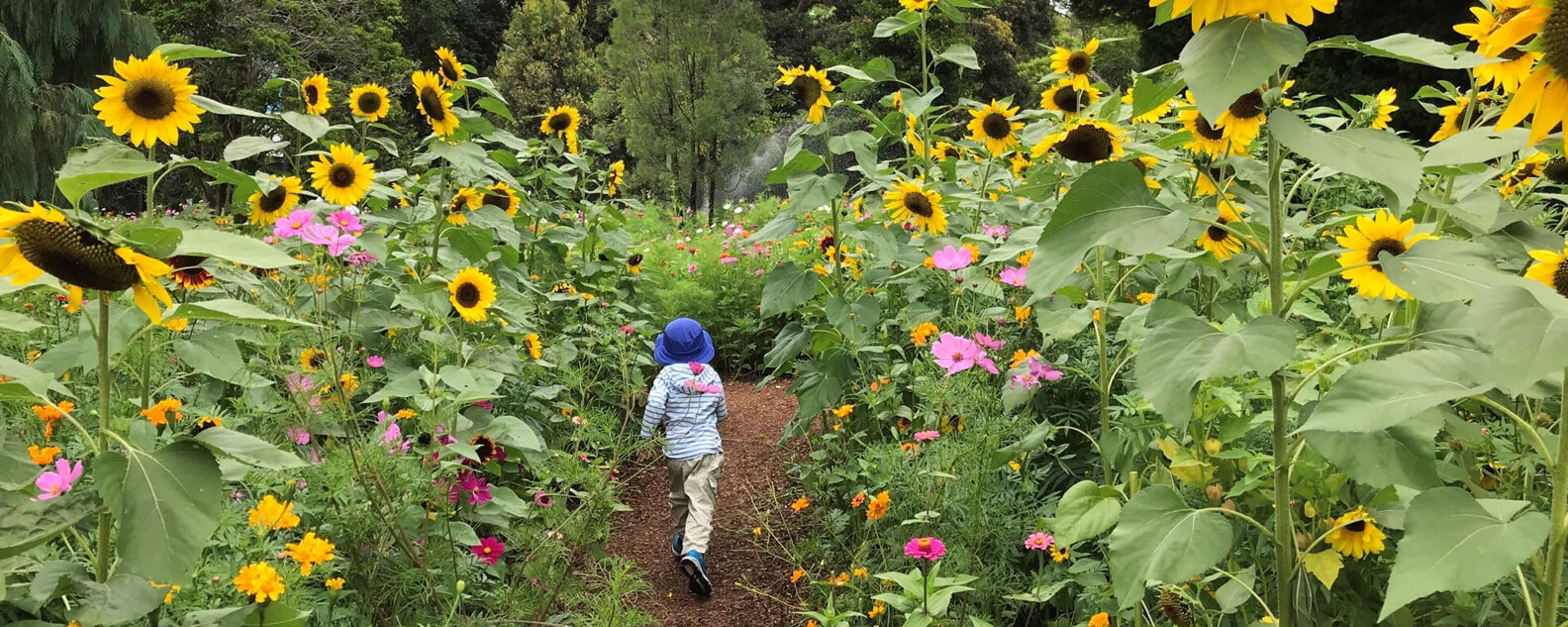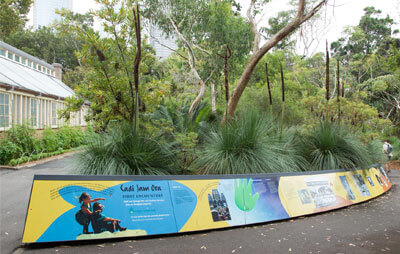Plants have different needs for successful growth. Some like a lot of sunlight while others prefer shade; some plants need lots of water, care and attention and others don’t need much at all. It’s important to understand these needs as you think about designing your garden.
The plant choices made in the garden can also attract animals such as bees, butterflies, birds and bats. These animals act as pollinators helping plants by spreading pollen, or as seed dispersers, allowing them to fruit and continue their life cycle. For example, the Caper White Butterfly has a special relationship with one particular tree species, the native Pomegranate tree Capparis arborea.
There are many useful plants you can nurture in a garden, including fruits, vegetables and herbs to use in the kitchen. A little planning and design can result in a garden just as you like it.
Watch our video to learn more about The Calyx's vertical green wall
Activities: Garden Design
1. Watch a video
Watch the Calyx Vertical Green Wall video above and learn about how they plan, design and take care of this Garden.
Write down an interesting thing that you didn’t know before.
2. Make some digital art
Look at all the images in the gallery of the Botanic Gardens. Choose your favourite photo.
Cut and paste the image and copy it into a Word or Paint document.
Practice your computer skills to rework this image into a unique piece of art. You might try to crop it, change the colours, add other images or text onto it, delete the background or many other options. Be creative and share your image with a friend later.
3. Draw a map
Go on a virtual tour of the Cadi Jam Ora Garden in the Royal Botanic Garden Sydney and observe how it is arranged.
Click on the information points to learn more about the plants.
Draw a bird’s-eye view map of the tour. Include the garden beds, paths and benches.
Add three plants to your map and label everything. TIP: Imagine you are a bird flying over the Cadi and looking down. What would it look like?
4. Make a mud map
Hide a 'treasure' (eg. a colourful rock or special item) somewhere in or near your home or school.
Use natural material from outside (rocks, leaves etc.) to create an aerial 'mud map' of this area.
Consider what materials are good for representing different garden elements, for example, sticks for walls.
Mark your treasure on the map using an X. Then have someone use the map to find the hidden treasure.
5. Design a garden
Design a garden for your home or school. Think about:
Its purpose – is it a food-growing garden or just for relaxing in?
How it looks - formal vs informal design, including colour, size and type of plants.
Access - around the garden and other features such as benches and tables, etc.

